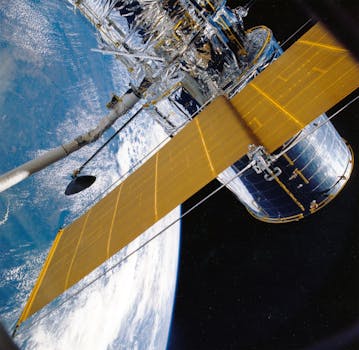
Beyond Earth: How Recent Advances in Satellite Tech are Shaping Global Communications
Beyond Earth: How Recent Advances in Satellite Tech are Shaping Global Communications. The recent advances in satellite technology have been nothing short of remarkable, with innovations in areas such as satellite design, launch technology, and signal processing enabling faster, more reliable, and more efficient global communications. In this article, we will explore the current state of satellite technology and its impact on global communications, as well as the future developments that are expected to shape the industry.
The Current State of Satellite Technology
Satellite technology has come a long way since the launch of the first commercial communications satellite, Intelsat 1, in 1965. Today, there are thousands of satellites in orbit around the Earth, providing a wide range of services including television broadcasting, telecommunications, weather forecasting, and navigation. The development of new satellite technologies such as high-throughput satellites (HTS) and very high-throughput satellites (VHTS) has enabled the provision of faster and more reliable broadband services, making it possible for people in even the most remote areas to access the internet and communicate with others around the world.
Advances in Satellite Design and Launch Technology
One of the key drivers of the recent advances in satellite technology has been the development of new satellite designs and launch technologies. The use of smaller, more efficient satellites such as cubesats and nanosats has made it possible to launch multiple satellites at once, reducing the cost and increasing the speed of deployment. Additionally, the development of reusable launch vehicles such as the SpaceX Falcon 9 has significantly reduced the cost of launching satellites into orbit, making it more accessible to a wider range of organizations and individuals.
The Impact of Satellite Technology on Global Communications
The impact of satellite technology on global communications has been profound, enabling people in even the most remote areas to access the internet and communicate with others around the world. Satellite technology has also played a critical role in disaster response and recovery, providing communications services when traditional infrastructure is damaged or destroyed. Furthermore, satellite technology has enabled the provision of a wide range of other services including television broadcasting, weather forecasting, and navigation, making it an essential part of modern life.
Future Developments in Satellite Technology
As satellite technology continues to evolve, we can expect to see a number of exciting developments in the coming years. One of the most significant advancements will be the launch of new constellations of low-Earth orbit (LEO) satellites, which will provide faster and more reliable broadband services to even the most remote areas. Additionally, the development of new satellite technologies such as quantum communications and satellite-based internet of things (IoT) services is expected to enable a wide range of new applications and services, from secure communications to smart cities and intelligent transportation systems.




